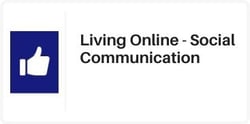Computer Applications | Digital Literacy
How to Meet ISTE Standards for Students with AES
As a curriculum developer with content to teach career readiness and 21st Century skills, computer teachers often ask how our curriculum aligns with the ISTE Standards for Students.
While our digital curriculum won’t cover all of the ISTE student standards, it can supplement your lessons and help teach other crucial technology and career readiness skills for your students.
In this article, you'll learn which AES modules can help your students meet ISTE standards and objectives.
Before getting to the details, let's review what the ISTE Standards for Students are!
Review: What Are the ISTE Standards for Students?
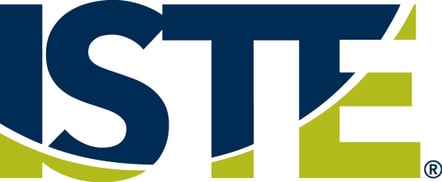
The International Society for Technology in Education (ISTE) is an organization dedicated to helping teachers leverage technology to improve student learning, while also helping students learn crucial skills needed for success.
As a result, ISTE has more than a dozen quality standards for how students, teachers, administrators, coaches, and computer educators should approach technology in the classroom.
With that in mind, ISTE has established seven standards for students:
Standard 1: Empowered Learner - Students understand the fundamental concepts of technology operations, demonstrate the ability to choose, use, and troubleshoot current technologies, and can transfer their knowledge to explore emerging technologies.
Standard 2: Digital Citizen - Understanding the rights and responsibilities that go along with using modern technology.
Standard 3: Knowledge Constructor - ISTE’s knowledge constructor standard requires students to understand and contextualize information online.
Standard 4: Innovative Designer - To be an innovative designer, students must understand problem-solving basics.
Standard 5: Computational Thinker - To be a computational thinker, ISTE says students must be able to create and employ strategies for solving problems that use technology.
Standard 6: Creative Communicator - A creative communicator expresses themselves clearly and concisely through digital media.
Standard 7: Global Collaborator - To become a global collaborator, students have to understand how their perspectives are different from others’ and work together to achieve a common goal.
Each standard is broken down into specific objectives that collectively show a students’ competency with that standard.
In the following section, you’ll discover which AES learning modules align with the ISTE Standards for Students and which objectives they can help you teach.
Which Learning Modules Align with ISTE Standards for Students?
The AES modules that can help you teach the ISTE student standards are:
- Coding Fundamentals
- Computing Systems
- Digital Citizenship
- Entrepreneurship
- Living Online - Social Communication
- Marketing
- Marketing Project
- Professionalism
- Web Research
This list includes the modules that align with the skills and concepts on the ISTE Standards for Students. The order of the modules is not intended as a teaching sequence but can be used as a starting point for using Business&ITCenter21 in your classes.
When using Business&ITCenter21, you may add other modules for computer applications, business education, and career readiness skills to meet your other course requirements.
With that, let’s dive into what each module consists of and which ISTE standards they align with.
1. Coding Fundamentals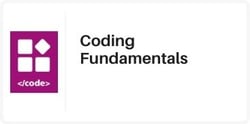
The Coding Fundamentals module will help students understand the fundamental concepts of computer science and coding. Students will learn vocabulary and concepts within the lessons.
Many of the lessons include mini-projects, where students will complete coding tasks using a drag/drop block coding language.
The AES Coding Fundamentals module helps teach two ISTE objectives:
- 5a - Students formulate problem definitions suited for technology-assisted methods such as data analysis, abstract models and algorithmic thinking in exploring and finding solutions.
- 5d - Students understand how automation works and use algorithmic thinking to develop a sequence of steps to create and test automated solutions.
2. Computing Systems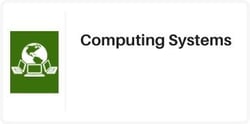
The Computing Systems module provides an overview of computer fundamentals, including input, processing, output, hardware, software, data, data storage, operating systems, and network computing. They will also explore using computers, web browsers, and email safely.
The AES Computing Systems module can help you teach one ISTE objective:
- 1d - Students understand the fundamental concepts of technology operations, demonstrate the ability to choose, use, and troubleshoot current technologies and are able to transfer their knowledge to emerging technologies.
3. Digital Citizenship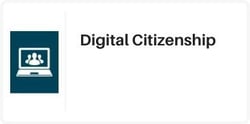
The Digital Citizenship module provides an overview of personal responsibilities in respectful and ethical behavior using digital resources as it pertains to personal and workplace digital communications, cyberbullying, and digital footprint.
The AES Digital Citizenship module helps students hit four ISTE objectives:
- 2a - Students cultivate and manage their digital identity and reputation and are aware of the permanence of their actions in the digital world.
- 2b - Student engage in positive, safe, legal and ethical behavior when using technology, including social interactions online or when using networked devices.
- 2c - Students demonstrate an understanding of and respect for the rights and obligations of using and sharing intellectual property.
- 2d - Students manage their personal data to maintain digital privacy and security and are aware of data-collections technology used to track their navigation online.
4. Entrepreneurship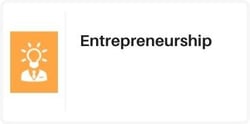
The Entrepreneurship module provides an introduction to entrepreneurship and an entrepreneur’s characteristics.
Students will learn how to identify business opportunities by understanding markets and customers and the operational aspects of running a small business.
The AES Entrepreneurship module helps teach one ISTE objective:
- 3a - Students plan and employ effective research strategies to locate information and other resources for their intellectual or creative pursuits.
5. Living Online - Social Communication
The Living Online - Social Communication module will introduce students to The Dream Squad.
This cast of characters will guide learners through making good decisions about online behaviors and learning about smartphones.
The AES Living Online - Social Communication module helps students hit three ISTE objectives:
- 2a - Students cultivate and manage their digital identity and reputation and are aware of the permanence of their actions in the digital world.
- 2b - Student engage in positive, safe, legal and ethical behavior when using technology, including social interactions online or when using networked devices.
- 2d - Students manage their personal data to maintain digital privacy and security and are aware of data-collections technology used to track their navigation online.
6. Marketing
The Marketing module provides an overview of the principles of marketing, product planning, and pricing and promotion strategies.
Students explore customer relations, market segmentation, product life cycle, product mix, branding, product packaging, pricing, promotion & distribution. As a final project, students will design and implement a product package using Microsoft Word.
The AES Marketing module helps teach one ISTE objective for students:
- 3a - Students plan and employ effective research strategies to locate information and other resources for their intellectual or creative pursuits.
7. Marketing Project
The Marketing Project module takes the role of a young marketing professional working for a small company.
The company is creating a marketing plan for King Street Theater's new IMAX theater complex. The student has to outline several promotional ideas for the IMAX Theater and create a new brand for King Street. The student also has to design two items using the new brand information.
The AES Marketing Project module helps students hit three ISTE objectives:
- 4b - Students select and use digital tools to plan and manage a design process that considers design constraints and calculated risks.
- 6a - Students choose the appropriate platforms and tools for meeting the desired objectives of their creation or communication.
- 6b - Students create original works or responsibly repurpose or remix digital resources into new creations.
8. Professionalism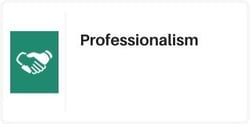
The Professionalism module provides an overview of professionalism, including appearances, personal characteristics, and traits belonging to successful employees.
Students will practice dealing with workplace situations and evaluate employees’ effectiveness.
The AES Professionalism module helps teach one ISTE objective:
- 2b - Students engage in positive, safe, legal and ethical behavior when using technology, including social interactions online or when using networked devices.
9. Web Research
The Web Research module provides an overview of how the Internet and the World Wide Web work.
They learn about different methods for searching for and evaluating information as well as using it ethically.
The AES Web Research module covers one ISTE objective for students:
- 3b - Students evaluate the accuracy, perspective, credibility, and relevance of information, media, data or other resources.
Is Business&ITCenter21 Right for You and Your Students?
Overall, these modules are our best recommendation for using Business&ITCenter21 as a supplemental resource to help students hit the ISTE objectives.
However, Business&ITCenter21 can’t be used as a stand alone resource for all of the ISTE standards. So, if your classes solely focus on the ISTE Standards for Students, Business&ITCenter21 may not be the best fit for you.
However, if you’re like most technology teachers, you probably have more than just ISTE standards to worry about.
Teachers that we work with often need to teach digital literacy skills along with the technical skills for Microsoft Office and Google Apps. If that’s the case for you, Business&ITCenter21 could be an excellent fit for your needs.
Business&ITCenter21 is used by thousands of teachers like you to save time with lesson planning and grading while maximizing student understanding and engagement.
It’s built with more than 600 hours of curriculum content to help you teach technology skills along with overarching career topics like communication, professionalism, and critical thinking.
Wondering if Business&ITCenter21 is right for you and your students? Watch the demo video to learn more:

